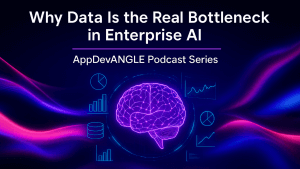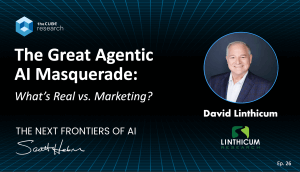The global AI market is projected to reach $757 billion in 2025, propelled by enterprise investments, tech giant innovation, and a relentless push for operational efficiency. At the same time, virtualization spend is approaching $11 billion, reflecting enterprise demand for scalable, secure, and flexible infrastructure. And as virtualized large language models (VLLMs) emerge as a new efficiency layer in AI deployments, platform strategies are under the spotlight.
In this episode of AppDevANGLE, I sat down with Stu Miniman, Senior Director at Red Hat, to preview the themes and technologies shaping Red Hat Summit 2025 and how organizations can prepare for what’s next.
AI Everywhere: A Platform-Wide Shift
AI isn’t a siloed solution anymore. It’s woven into every part of the software stack.
“AI is a once-in-a-generation technology—more transformative than cloud computing,” said Miniman. “It’s changing how we think, build, and deliver.”
Red Hat’s approach reflects this. At Summit 2025, expect to see how AI has become Red Hat’s fourth platform, alongside Red Hat Enterprise Linux (RHEL), OpenShift, and Ansible. AI use cases span infrastructure automation, secure software development, and containerized deployment strategies.
This aligns with our research, which shows 65% of organizations plan to migrate workloads from VMs to containers in the next two years, primarily to support AI, analytics, and operational efficiency. Red Hat’s AI strategy, including its partnership with IBM and its support for open-source projects like InstructLab and VLLM, positions it well to meet these needs.
VLLMs: The Linux of the AI Model World?
Virtualized large language models (VLLMs) are quietly becoming a cornerstone of AI development. VLLMs reduce inference overhead, improve latency, and make it easier to deploy AI workloads in constrained or edge environments.
“VLLM could be the Linux of the model world,” Miniman noted. “Every major vendor is integrating with it.”
Red Hat’s acquisition of Neural Magic and its contributions to the VLLM project aim to build a developer- and enterprise-friendly path to AI deployment. By focusing on model portability, open APIs, and efficient operations, Red Hat is building a foundation for AI that’s secure, scalable, and infrastructure-agnostic.
Virtualization Reimagined Beyond VMware
With the Broadcom-VMware acquisition sending shockwaves through the enterprise IT market, many organizations are reevaluating their virtualization strategy.
“We’re seeing customers with hundreds or thousands of VMs actively migrate to OpenShift Virtualization,” said Miniman.
This is not just about cost avoidance, though Red Hat noted a $500M+ pipeline for virtualization alone. It’s about reducing risk, improving security, and aligning with modern operating models. Organizations want to consolidate platforms, reduce tool sprawl, and embrace hybrid cloud flexibility.
Hybrid Cloud and Repatriation Trends
In a surprising trend reversal, 33% of organizations now plan to build cloud-native applications on-premises within the next two years, up from 11% today. Our data suggests that repatriation is being driven by concerns around data sovereignty, latency, and the need to optimize AI infrastructure at the source.
Red Hat’s unified platform strategy, supporting on-prem, cloud, and edge deployments, is designed for this moment. Developers can use a consistent stack across environments, reducing skill gaps and simplifying operations.
“The beauty of our platform is that it doesn’t require developers to relearn everything when they shift environments,” said Miniman.
From Cloud Buzz to Operating Model Reality
One of the strongest takeaways from this discussion was how the definition of cloud has evolved. It’s no longer just a place, it’s an operating model.
“Whether you’re on Z, x86, public cloud, or edge, cloud-native thinking is the path forward,” said Miniman. “And it’s critical for organizations to understand that early.”
That includes a robust data strategy, which remains a gap for many enterprises pursuing AI. Without structured, reliable, and accessible data, AI remains aspirational.
Looking Ahead to Red Hat Summit 2025
Red Hat Summit is a learning hub for the future of IT. Hands-on labs, partner briefings, and customer case studies highlight how enterprises are solving real-world challenges using open source innovation.
“Watch for the Innovation Award winners,” Miniman added. “They’re leading the industry and demonstrating how to get it done.”
As organizations look to modernize infrastructure, embrace AI, and shift from legacy systems to flexible, open platforms, Red Hat’s ecosystem plays a pivotal role.



